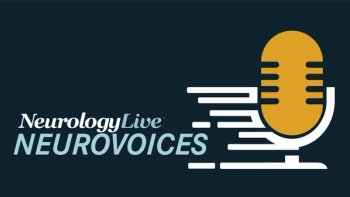
FDA Approves Italfarmaco's Givinostat for Duchenne Muscular Dystrophy
Branded as Duvyzat, givinostat is the first nonsteroidal drug approved to treat patients with all genetic variants of DMD.
Months after an extended review process, the FDA has approved Italfarmaco SpA's givinostat (Duvyzat), a proprietary histone deacetylase (HDAC) inhibitor, as a treatment for patients with Duchenne muscular dystrophy (DMD).1,2 The treatment is designed to inhibit HDACs, enzymes that prevent gene translation by changing the 3-dimensional folding of DNA in the cell. The decision makes it the first nonsteroidal drug approved to treat patients with all genetic variants of DMD.
The supporting data for the approval of givinostat comes from the phase 3 EPIDYS trial (NCT02851797). EPIDYS, a randomized, double-blind, placebo-controlled, multicenter study, included 179 ambulant male individuals who were randomly assigned 2:1 to either oral givinostat or placebo for an 18-month treatment period. Of these, 120 boys formed the target population. Published recently in The Lancet Neurology, results showed a slower decline in givinostat-treated patients on the primary end point of climbing 4 stairs in comparison with placebo (difference, 1.78 seconds; P = .0345).3
“We are pleased that the FDA approved givinostat for individuals with Duchenne age 6 and older. This adds to the list of approved treatments for families facing this devastating disease and is an important step forward in accelerating transformative treatments for everyone independent of their genetic mutation," Debra Miller, the founder and chief executive officer of CureDuchenne, told NeurologyLive®.
In EPIDYS, a variety of secondary end points, such as the North Star Ambulatory Assessment (NSAA) and time to rise (TTR) test, were consistent with the functional primary end point. In addition, fat infiltration in the vastus lateralis muscle of the high, considered a characteristic of disease progression in DMD, was assessed using a noninvasive objective imaging method called magnetic resonance spectroscopy. All told, givinostat treatment resulted in delayed fat infiltration by approximately 30% (difference vs placebo, –2.9%; nominal P = .035).
In terms of safety, 95% of the adverse events (AEs) observed in EPIDYS were mild to moderate in severity, with 3 (2.5%) boys withdrawing treatment because of an AE. Similar to previous studies, the AEs occurring in at least 1 of 10 participants were diarrhea, abdominal pain, thrombocytopenia, hypertriglyceridemia, platelet decrease, and triglyceride increase. The therapy’s tolerability was managed with appropriate monitoring and dose adjustments, with no new safety concerns identified.
"Our team is thrilled about the FDA's approval of givinostat. This news reflects our robust and successful clinical development program as well as our commitment to providing a safe and effective therapeutic that can have a meaningful impact on patients impacted by DMD. We are now focused on making givinostat available to patients in the United States as quickly as possible," Paolo Bettica, PhD, the vice president of research and development at Italfarmaco, told NeurologyLive.
The FDA indicated that the recommended dose of givinostat is determined by the patient's body weight, and it should be administered orally, twice daily, with food. The FDA also noted that the prescribing information for the Italfarmco product includes warnings about the need to evaluate patient platelet counts and triglycerides before prescribing givinostat.1 According to the agency's announcement, those with a platelet count less than 150 x 109/L should not be administered the treatment, and monitoring of platelet counts and triglycerides during treatment is recommended to determine the need for possible dosage adjustments. Additionally, dosage modifications may be needed for those who experience moderate or severe diarrhea.
The FDA indicated that the therapy can also cause prolongation of QT corrected for heart rate (QTc), which can increase the risk of irregular heartbeats, thus patients taking medications that also cause QTc prolongation or who have certain types of heart disease should avoid the therapy.
"DMD is a devastating disease with only limited treatment options available and for many years, steroids were the standard of care. Givinostat is a non-steroidal drug that modulates the deregulated activity of HDACs in the dystrophic muscle, which is a major consequence of the lack of dystrophin associated with DMD," Bettica added. "The FDA's approval of givinostat brings us one step closer to providing a large number of patients with this daily, orally administered therapeutic that could represent a significant advance in the treatment of DMD."
A supportive post hoc analysis from EPIDYS presented at the
In the overall intention-to-treat (ITT) population (n = 179), investigators reported that givinostat displayed a statistically significant difference compared with the control in change from baseline at 18 months in the timed 4 stair climb (global longitudinal strain mean ratio, 0.84; SD, 0.069; P = .0116). Overall, investigators noted that the treatment effect estimates relating to the key secondary end points consistently favored givinostat over the control, which supports the primary end point result.
"We are grateful to the MDA committee for the opportunity to share this result, which shows the drug's mechanism of action,"
Conducted by lead author Eugenio Maria Mercuri, MD, PhD, a professor of pediatric neurology and head of the Pediatric Neurology and Psychiatry Unit at the Gemelli Hospital Catholic University Foundation, in Rome, Italy, the prior post hoc study used an analysis of covariance (ANCOVA) to assess the impact of givinostat compared with the control on the overall ITT population. Thus, investigators analyzed both the primary end point, the time to climb 4 standard stairs, and 6 key secondary end point.
In the previous analysis, the investigators used the NSAA to evaluate both the change from baseline at 18 months of the total score and the cumulative loss of NSAA items. In the findings, authors observed an association between givinostat treatment and a less decline in NSAA Total Score (mean difference, 1.50 points; nominal P = .035). Researchers noted that givinostat treatment in patients with DMD showed a good tolerability profile, lining with findings in prior studies in DMD and other diseases.
“DMD denies the opportunity for a healthy life to the children it affects. The FDA is committed to advancing the development of new therapies for DMD. This approval provides another treatment option to help reduce the burden of this progressive, devastating disease for individuals impacted by DMD regardless of genetic mutation," Emily Freilich, MD, director of the Division of Neurology 1 in the Office of Neuroscience in the FDA’s Center for Drug Evaluation and Research, said in a statement.1
Previously published phase 2 results showed that treatment with givinostat significantly increased the fraction of muscle tissue seen in post-treatment muscle biopsies and reduced the amount of fibrotic tissue. It also substantially reduced tissue necrosis and fatty replacement. Overall, the drug significantly counteracted the histological disease progression typically seen in ambulant boys with DMD aged 7 to 10 years.5
Follow-up analyses in a long-term extension of the previously reported phase 2 trial showed a delay in disease progression in patients treated with givinostat and steroids for more than 6 years compared with published results from the natural history study by The Cooperative International Neuromuscular Research Group (CINRG).
Notably, the mean age of loss of ambulation in those treated with givinostat plus corticosteroids was 15.20 years compared to 13.40 years in the CINRG study. Moreover, the yearly rate of decline of 2 respiratory parameters, forced vital capacity percent predicted (FVC%) and peak expiratory flow percent predicted (PEF%) was 2.3% and 0%, respectively in subjects with DMD treated with givinostat and corticosteroids.6
"We're delighted to see another drug approved for Duchenne. I think we're starting to get a critical mass of options for patients, which is different from where we were 10 years or even 5 years ago where we didn't have a lot of options for Duchenne,”
REFERENCES
1. FDA Approves Nonsteroidal Treatment for Duchenne Muscular Dystrophy. FDA. News release. March 21, 2024. Accessed March 21, 2024. https://www.fda.gov/news-events/press-announcements/fda-approves-nonsteroidal-treatment-duchenne-muscular-dystrophy
2. Italfarmaco group announces new PDUFA date for givinostat DMD NDA. News release. November 29, 2023. Accessed March 21, 2024. https://finance.yahoo.com/news/italfarmaco-group-announces-pdufa-date-100000954.html
3. Mercuri E, Vilchez JJ, Boespflug-Tanguy O, et al. Safety and efficacy of givinostat in boys with Duchenne muscular dystrophy (EPIDYS): a multicentre, randomised, double-blind, placebo-controlled, phase 3 trial. Lancet Neurol. 2024;23(4):393-403. doi:10.1016/S1474-4422(24)00036-X
4. Mercuri EM, Brogna C, Zaidman C, et al. The EpidysGivinostat Study in DMD: supportive results. Presented at: 2024 MDA Clinical and Scientific Conference; March 3-6; Poster M163
5. Bettica P, Petrini S, D'oria V, et al. Histological effects of givinostat in boys with Duchenne muscular dystrophy. Neuromuscul Disord. 2016;26(10):643-649. doi:10.1016/j.nmd.2016.07.002
6. Italfarmaco provides update on advanced-stage clinical development program with givinostat in Duchenne muscular dystrophy. News release. Italfarmaco. April 27, 2020. Accessed March 21, 2024. https://www.businesswire.com/news/home/20200427005274/en/Italfarmaco-Provides-Update-on-Advanced-Stage-Clinical-Development-Program-with-Givinostat-in-Duchenne-Muscular-Dystrophy
Newsletter
Keep your finger on the pulse of neurology—subscribe to NeurologyLive for expert interviews, new data, and breakthrough treatment updates.



































